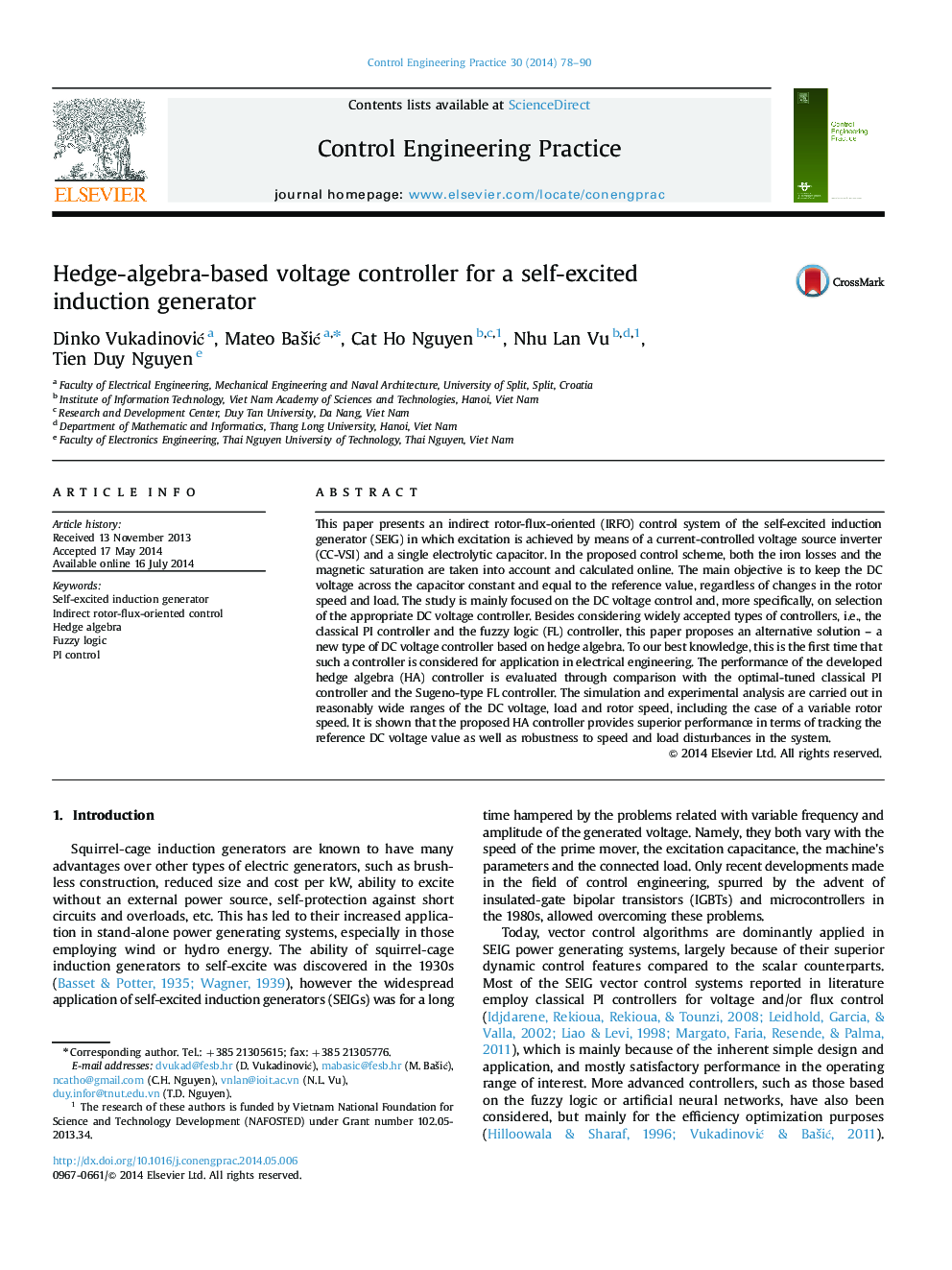| Article ID | Journal | Published Year | Pages | File Type |
|---|---|---|---|---|
| 699603 | Control Engineering Practice | 2014 | 13 Pages |
The investigation is focused on selecting the appropriate SEIG voltage controller.A hedge-algebra-based (HA) voltage controller is developed for this purpose.It is the first time that such a controller is considered in electrical engineering.The HA controller is compared with the classical PI and fuzzy logic controllers.The performance of the proposed HA controller is shown to be superior.
This paper presents an indirect rotor-flux-oriented (IRFO) control system of the self-excited induction generator (SEIG) in which excitation is achieved by means of a current-controlled voltage source inverter (CC-VSI) and a single electrolytic capacitor. In the proposed control scheme, both the iron losses and the magnetic saturation are taken into account and calculated online. The main objective is to keep the DC voltage across the capacitor constant and equal to the reference value, regardless of changes in the rotor speed and load. The study is mainly focused on the DC voltage control and, more specifically, on selection of the appropriate DC voltage controller. Besides considering widely accepted types of controllers, i.e., the classical PI controller and the fuzzy logic (FL) controller, this paper proposes an alternative solution – a new type of DC voltage controller based on hedge algebra. To our best knowledge, this is the first time that such a controller is considered for application in electrical engineering. The performance of the developed hedge algebra (HA) controller is evaluated through comparison with the optimal-tuned classical PI controller and the Sugeno-type FL controller. The simulation and experimental analysis are carried out in reasonably wide ranges of the DC voltage, load and rotor speed, including the case of a variable rotor speed. It is shown that the proposed HA controller provides superior performance in terms of tracking the reference DC voltage value as well as robustness to speed and load disturbances in the system.
